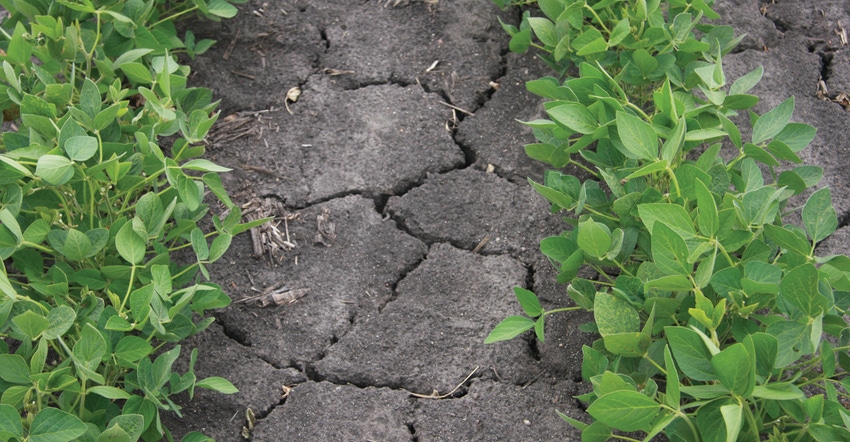
The release of the July 8 U.S. Drought Monitor Map showed the data that the Minnesota ag community was expecting: Category level D2 — severe drought — for eight consecutive weeks.
That classification kicked in the USDA Farm Service Agency natural disaster designation for six Minnesota counties, allowing the agency to extend much-needed emergency credit to farmers through emergency loans. The loans can be used for various recovery needs, including the replacement of equipment or livestock, reorganization of a farming operation or the refinance of certain debts.
The eligible counties are Clay, Norman and Polk to the north and Faribault, Jackson and Martin to the south.
The application deadline is Feb. 22. FSA will review the loans based on the extent of losses, the security available and repayment ability.
The July 8 national drought monitor map showed drought continuing to inch across the state. All of Minnesota is in drought, ranked from abnormally dry (D0) to moderate drought (D1) to deVere drought (D2) The severe drought area increased to 40%, up from 11% the week prior.
View the U.S. Drought Monitor map at droughtmonitor.unl.edu.
OK to use cover crops
To help farmers with forage needs, USDA’s Risk Management Agency says farmers with crop insurance can hay, graze or chop cover crops for silage, haylage or baleage at any time, and still receive 100% of the prevented planting payment.
Previously, cover crops could only be hayed, grazed or chopped after Nov. 1; otherwise, the prevented planting payment was reduced by 65%.
RMA added this flexibility due to widespread weather events such as flooding, excessive rainfall and drought over recent years, resulting in significant prevented planting claims under the federal crop insurance program. Given these extreme weather patterns and the need to provide farmers with opportunities to protect natural resources, RMA changed its policy, noting that cover crops are especially important on fields prevented from planting as they help reduce soil erosion and boost soil health.
To learn more about this policy change, read the RMA bulletin update.
Additional drought resources
The Upper Midwest Agricultural Safety and Health Center has assembled resources into an online drought toolkit to assist farmers during this dry time. Resource topics covered include economics, the environment, health, social wellbeing, heat illness and safety and wildfire safety.
View the resources at bit.ly/droughttoolkitumash.
About the Author(s)
You May Also Like






